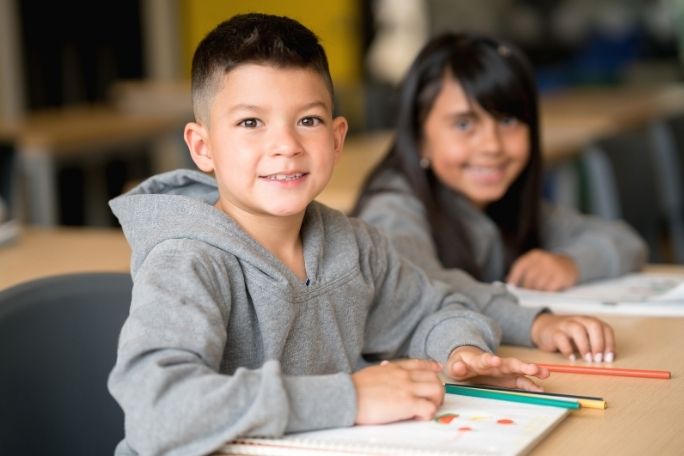Lesson summary
Students create a self-portrait that explains the environmental action they want to take. They begin by thinking about the parts of our environment that are important to them and the actions they can take to help these parts of our environment. Students will then explore why artists create self-portraits, and will plan and create their own self portrait that includes a message about the action they want to take to help our environment. Students will then work together to either create an exhibition or video to share their self-portraits and environmental messages with an audience.
Learning intentions:
Students will...
- understand what actions we can take to help some of the different parts of our environment
- understand why and how artists might create self-portraits
Success criteria:
Students can...
- describe some of the different parts of our environment
- name one way to take action for different parts of our environment
- use pencil techniques to create a self-portrait
- write an artist's statement
Lesson guides and printables
Lesson details
Curriculum mapping
Australian curriculum content descriptions:
Year 3 & 4 Visual Arts:
- Use materials, techniques and processes to explore visual conventions when making artworks (ACAVAM111)
- Present artworks and describe how they have used visual conventions to represent their ideas (ACAVAM112)
Year 4 HASS:
- The importance of environments, including natural vegetation, to animals and people (ACHASSK088)
Syllabus outcomes: VAS2.2, GE2-1, GE2-2, GE2-3.
General capabilities: Critical and creative thinking.
Cross-curriculum priority: Sustainability OI.2.
Relevant parts of Year 3 & 4 Visual Arts achievement standards: Students plan and make artworks that communicate ideas.
Relevant parts of Year 4 HASS achievement standards: Students identify the interconnections between components of the environment and between people and the environment.
Unit of work: Creative Sustainability – Year 3 & 4.
Time required: 120+ mins.
Level of teacher scaffolding: Medium – facilitate class discussion, oversee self-portrait planning and creation.
Resources required
- Student Worksheets – one copy per student
- Art materials (cartridge paper, graphite pencils, erasers, coloured pencils/paints)
- Butcher’s paper
- Marker pens
- Sticky notes, or small pieces of blank scrap paper and sticky take
- Self-portrait Flashcards
- Self-portrait Examples
- Colouring Techniques Handout
- Pencil Colouring Techniques Handout
Skills
This lesson is designed to build students’ competencies in the following skills:
- Collaboration
- Communication
- Community engagement
- Creativity
- Critical thinking
Additional info
Faber-Castell has long understood the importance of creativity to all people, especially to young people. It is also continuously searching for environmentally friendly processes and high-quality materials to enhance children’s creative experience throughout every development phase. For more information about Faber-Castell, click here.


Welcome back!
Don't have an account yet?
Log in with:
By signing up to Cool.org you consent and agree to Cool's privacy policy to
store, manage and process your personal information. To read more, please see
our privacy policy here(Opens in new tab).
Create your free Cool.org account.
Many of our resources are free, with an option to upgrade to Cool+ for premium content.
Already have an account?
Sign up with:
By signing up to Cool.org you consent and agree to Cool's privacy policy to
store, manage and process your personal information. To read more, please see
our privacy policy here(Opens in new tab).